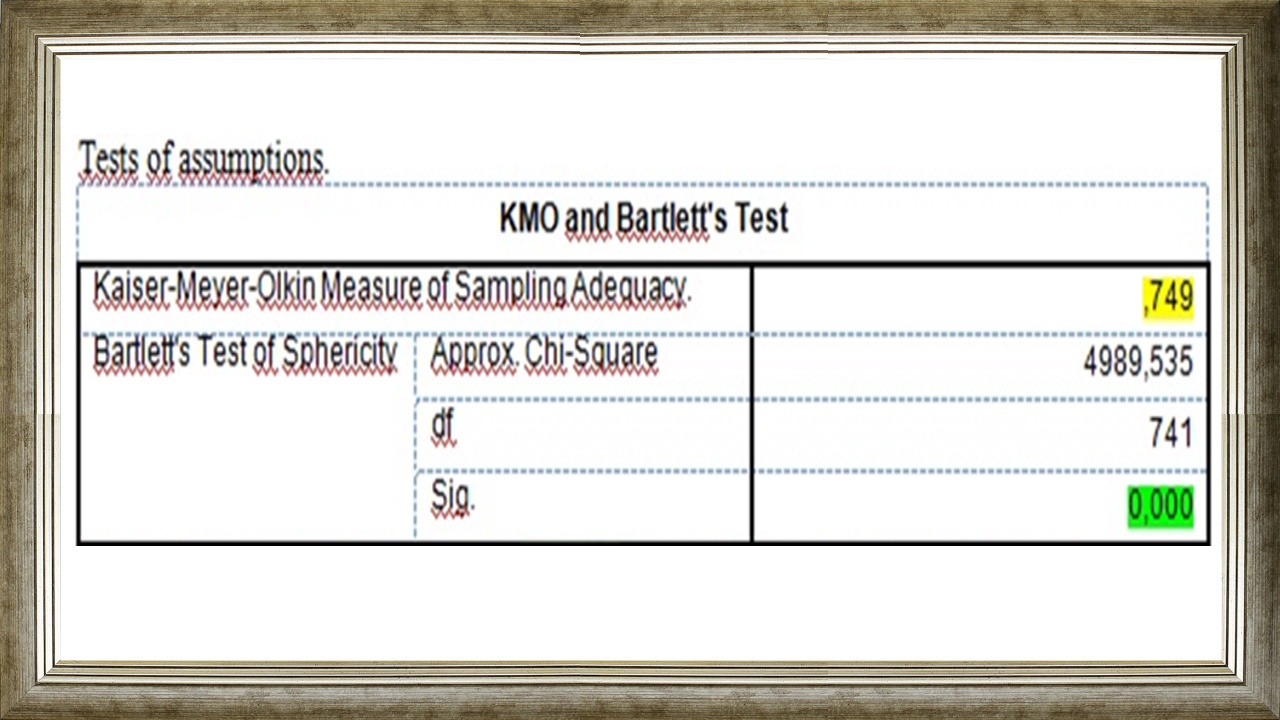Exploratory Factor Analysis (EFA), How to interpret KMO and Bartlett´s test
The KMO test and Bartlett's test are used to assess the suitability of the data for factor analysis.
KMO test (Kaiser-Meyer-Olkin test)
Bartlett´s test
|
Interpretation:
|
|
|
KMO > 0,5 variables are considered suitable for factor analysis KMO > 0,6 acceptable factor analysis, KMO > 0,7 good factor analysis, KMO > 0,8 very good factor analysis, KMO > 0,9 excellent factor analysis. |
Kaiser and Meyer, 1974 |
|
Bartlett's test < 0,05 variables can be used in factor analysis |
Bartlett, 1954 |
|
www.StatistischeBeratung.de |
|
| Cite this article in your research paper: |
| APA Statistische Beratung Leonardo Miljko (datum) Exploratory Factor Analysis (EFA) - How to interpret KMO and Bartlett´s test. Retrieved from https://www.StatistischeDatenAnalyse.de/images/Exploratory_Factor_Analysis-EFA-How_to_interpret_KMO_and_Bartletts_test.pdf. |
|
Harvard
Statistische Beratung Leonardo Miljko January 10, 2020 Exploratory Factor Analysis (EFA) - How to interpret KMO and Bartlett´s test. viewed datum < https://www.StatistischeDatenAnalyse.de/images/Exploratory_Factor_Analysis-EFA-How_to_interpret_KMO_and_Bartletts_test.pdf > |
Wichtiger Hinweis: Der Originalinhalt ist auf Kroatisch. Die Übersetzung ins Deutsche und Englische erfolgte über einen Web-Übersetzer. Wir entschuldigen uns für die Fehler.










